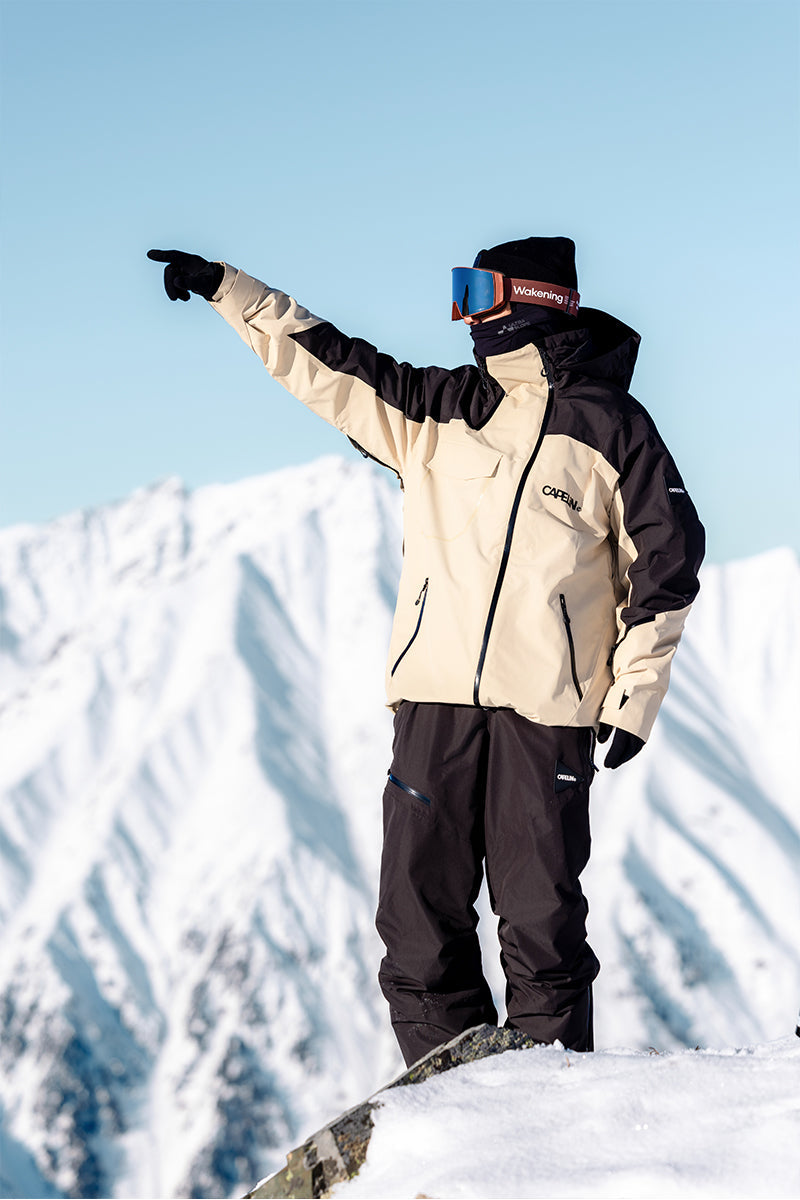Introduction
If you’ve ever worn a snowboard jacket, ski jacket, or windbreaker, you’ve likely benefited from DWR (Durable Water Repellency)—a key technology that keeps you dry in wet conditions. But what exactly is DWR, and how does it work? Let’s break it down.
Contents
● What is DWR?
● How does DWR coating work?
● Where is DWR used?
● How to maintain DWR coatings?
What Is DWR?

DWR stands for Durable Water Repellency, a special coating applied to fabrics to make them water-resistant. Unlike fully waterproof materials that block moisture entirely, DWR causes water to bead up and roll off the surface rather than soaking in. This is why high-performance outerwear like snowboard jackets and ski jackets stay dry in light rain or snow without becoming heavy or stiff.
Originally developed for outdoor gear, DWR has become a standard feature in windbreakers and other technical apparel. It’s not a permanent solution—over time, wear and tear can reduce its effectiveness—but when properly maintained, it significantly extends the life of your waterproof gear.
How Does DWR Coating Work?

DWR works by altering the surface tension of fabric fibers. When applied, it forms an ultra-thin, hydrophobic (water-repelling) layer that prevents water from spreading out and soaking in. Instead, moisture forms droplets that slide off with minimal absorption.
Here’s the science behind it:
● Surface tension reduction: DWR increases the contact angle between water and fabric, making it harder for water to cling.
● Beading effect: Instead of spreading, water forms tight beads that roll away with movement (like when you shake a wet windbreaker).
● Breathability preservation: Unlike plastic-like waterproof barriers, DWR allows sweat vapor to escape, keeping you dry from both rain and perspiration.
However, DWR isn’t invincible. Dirt, oils (from skin or sunscreen), and repeated washing can degrade the coating, requiring reapplication.
Where Is DWR Used?

DWR technology shines brightest in performance outerwear, where its water-repelling properties are absolutely essential. The most critical applications are found in:
● Snowboard Jackets & Ski Jackets: These rely heavily on DWR to maintain their protective qualities. Without it, snow would stick and melt into the fabric, weighing you down and reducing insulation effectiveness. The coating ensures powder slides right off while keeping you dry during chairlift rides in wet snowfall.
● Technical Windbreakers: From mountain trails to urban commutes, DWR allows windbreakers to shed light rain and morning dew while remaining highly breathable. It's what keeps these jackets functional during sudden weather changes.
While DWR also benefits gloves, footwear, and bags (preventing moisture absorption in various outdoor gear), its most sophisticated implementations are reserved for high-performance outerwear where breathable waterproofing matters most. Professional-grade snow jackets and mountaineering shells often combine DWR with advanced membranes for maximum weather protection without the "plastic bag" effect of cheaper rain gear.
How to Maintain DWR Coatings
Since Durable Water Repellency wears off over time, proper care is essential. Here’s how to keep your gear performing its best:
1. Wash Properly: Use a mild, technical detergent (avoid standard detergents with fabric softeners, which clog DWR).
2. Reapply DWR: After washing, use a spray-on or wash-in DWR treatment (like Nikwax or Grangers) to restore water repellency.
3. Avoid Heat Drying Excessively: While some reactivation with low heat helps, high heat can damage the coating.
4. Clean Regularly: Dirt and oils break down DWR faster, so keeping your snowboard jacket or windbreaker clean prolongs its life.
Conclusion:
DWR is the unsung hero behind snowboard jackets, ski jackets, and windbreakers, keeping them functional in wet conditions. While it’s not a lifetime treatment, understanding how it works—and how to maintain it—ensures your gear stays reliable season after season. Next time you see water beading up on your jacket, you’ll know it’s Durable Water Repellency doing its job!
FAQ:
Q: How often should you reapply DWR coating to maintain waterproofing?
A: Reapply DWR every 10-20 wears or when water stops beading on your jacket's surface.












